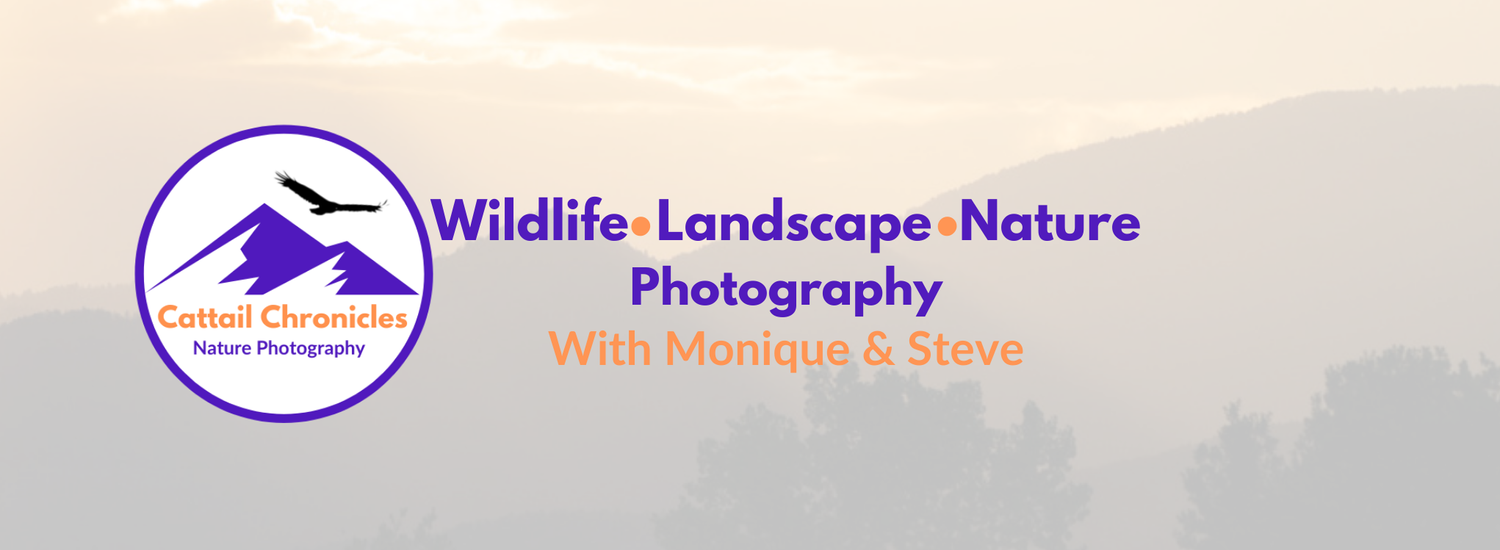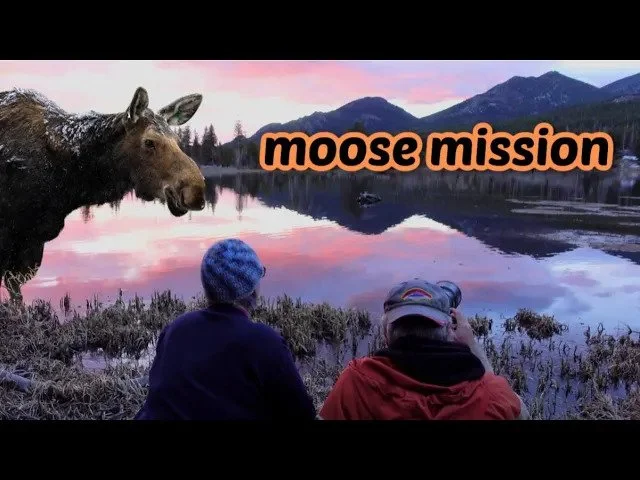Chasing the Light
We started our Moose Mission when we received reports of multiple gatherings of moose in Rocky Mountain National Park. The two sites that we were most interested in were Sheep Lakes and Sprague Lake. So, come Saturday morning we hauled our cameras and equipment to Sheep Lake to see what we could see. No moose. After a couple of hours of waiting for some sort of activity, we headed over to Sprague Lake. No moose there either. It was a disappointing morning. In the meantime, Monique found some photos on the internet of moose at Sprague Lake with a glorious sunrise showcasing a moose in the lake. That became our target. We were focused on chasing the light as well as chasing the moose. As part of this mission, we learned a couple of things that I will outline in this blog. After a word from our self-promoter.
At the end of this blog, there is a list of affiliate links for much of the equipment that we use. There is also a list of all the links that we have referred to in this blog. So, if you want to help us sell a little please use the affiliate links below. If you so desire, you can also buy us a cup of coffee at the link below.
This is where we want to be next time
There were two, maybe three lessons that I learned on this Moose Mission. The first is to scout the location where you want to photograph wildlife. We were very familiar with Sheep Lakes so that was not an issue. Sprague Lake was a different story. We had been there several times. Mostly to check out the lake. Show it off to visitors and maybe take a few landscape photos. On this outing, we were on a mission. We wanted to photograph moose with the sunrise in the background. Not just a sunrise but a glorious sunrise. We arrived at the lake and set up our equipment on the west side to take maximum advantage of the sunrise.
This is where we were
Here is where we made a fundamental mistake. At least if we wanted to get the moose backlit by a glorious sunrise. The sunrise was nice but not glorious and when the moose came out it was off to the side of the lake. The sunrise mediocrity was expected. You don't get glorious sunrises every morning, even in Colorado. The moose in the wrong place was not. We did get some photos. We were expecting/hoping that the moose would wander farther out into the lake thus lining up with the sunrise. That didn't happen. As the golden hour drew to a close we determined that the best position to get the photos we wanted was more to the south side of the lake. That way we could get the moose framed that we wanted with sunrise just off to the side a little ways. By this time a crowd had gathered in that position with lots of cell phones so we decided another day would be best to try for a glorious morning of moose. The lesson here is to scout your location before showing up to photograph expected wildlife. I hear of YouTube photographers spending a significant amount of time, 30, 60 minutes, or more, selecting where they place their camera for a shot. It may take even longer to set up for a wildlife shot. After all, wildlife moves around. Not only do we need to line up the background we want but we need to know where the targeted wildlife is going to be and how they are going to move through the composition frame. That is lesson 1. We will be continually learning and relearning that one.
The second lesson is to look behind. Or more generally look around, and be aware of what is going on in the environment. When we set a target that we want to photograph we tend to get very focused on that target, to the exclusion of all else. As much as research and preplanning help to get great photographs, serendipity plays a large role also. Maybe even a greater role. For all of the research and planning we do. It only gets us so far. The truly great shots have a significant role for luck. The light lines up just right. The clouds are perfect. The animal strikes a dramatic pose or undertakes a dramatic behavior. Or maybe an opportunity totally unexpected presents itself. In this case, there was a tree root projecting from the water just in front of us. At one point in the morning, the light struck the root in a manner that I thought was extraordinary. I spent some time exploring that photo and it gave me a very nice black-and-white image. So while I did get some nice shots of moose, I also picked up a very nice abstract, or intimate nature photo for my collection.
A tree root sticking out of Sprague Lake, right in front of us
A possible third lesson is to not waste opportunities to learn new things and try different things. While watching the moose at Sprague Lake before sunrise I noticed that when the moose raised its head from the water it would pause at various places in its motion. I was wondering if a longer exposure would be interesting. Instead of wondering about it and not trying it for fear of missing a better shot, I gave it a try. Taking photos as long as 1/15 of a second. The effect was interesting. I did get some clear photos of the moose as it paused. The biggest change in the images was that the water was smoothed out, as longer shutter speeds tend to do. The water streaming from the moose's head also had a different character. So while I was waiting for my planned shots I had a chance to try something different and learn more. The photos of this experiment are below.
Moose at 1/400 sec at f/7.1 ISO 2000
Moose at 1/40 sec at f/6.3, ISO 2000, 600mm
Moose at 1/15 sec at f/6.3, ISO 1000, 600mm
For your convenience, we have added related links and affiliate links at the end of this post.
Here Are Links Related to This Post:
The Video Inspiration For This Blog
Some of Our Other Links
















